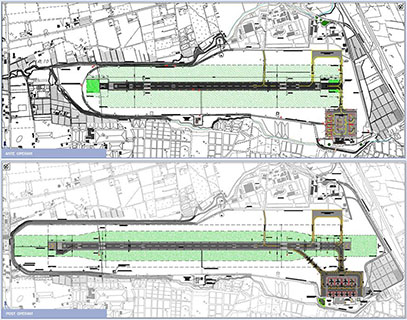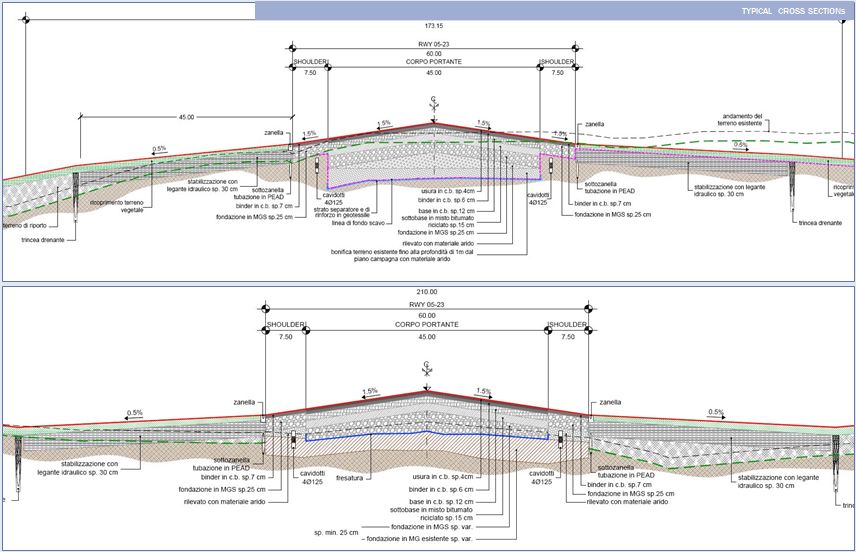Committente: AEROPORTO DI SALERNO S.p.A. Address: Via Olmo snc 84092 Bellizzi (Salerno), Italy
Periodo di Svolgimento: 2015
Opera Intervento:
Temporary experts grouping
TECNO ENGINEERING 2C S.r.l. Group leader
Studio Valle Progettazioni
Prestazioni professionali svolte:
Design and security coordination during design phase
Importo dei lavori: € 26.585.514,44
Salerno Pontecagnano “Costa d’Amalfi” (LIRI)

Salerno Costa D’Amalfi Airport (IATA code: QSR, ICAO code: LIRI) is located 15km far from Salerno City in direction south east .
Scope of the work assigned to TE2C was to upgrade existing AIRSIDE infrastructures and facilities to improve airport operations.
Detailed design concerned the following items:
- rehabilitation and upgrade of runway paved surface.
- rehabilitation and upgrade of the runway shoulders.
- rehabilitation and widening of the Taiway D.
- construction of a new Taxiway E
- construction of Antiblast surface THR23 and THR 05
- THR25 Runway End Safety Area (RESA) upgrading
- runway strips, Cleared and Graded Area (CGA)upgrading
- new Airfield Ground Lighting systems (AGL) and Visual Aids for navigation
- improved drainage system to collect storm water runoff from the pavement surface
- hydraulic arrangemts of Voltaladri and Diavolone rivers
- multifunctional building and cargo building
- upgrading of fire fighters station
- construction of a system for storage and distribution of fuels.
For apron pavement the technical solution adopted was a surface course made of bituminous open grade full of grout.
This solution joins a rapid laying with an improvements in bearing capacity of the flexible pavements and a good resistance to damage given by kerosene.
For what concern the pavement’s design the starting point for the design activities was analyze the existing pavements for the maintenance activities and the ground characteristics for the new construction.
5 different pavements (flexible and semi-rigid) were designed and verified in order to take into account all the structural difference of the existing pavements and the ground bearing capacity.
An high attention was paid to the materials deriving fron the activities of milling, demolition and excavation in order to minimize the waste production.
